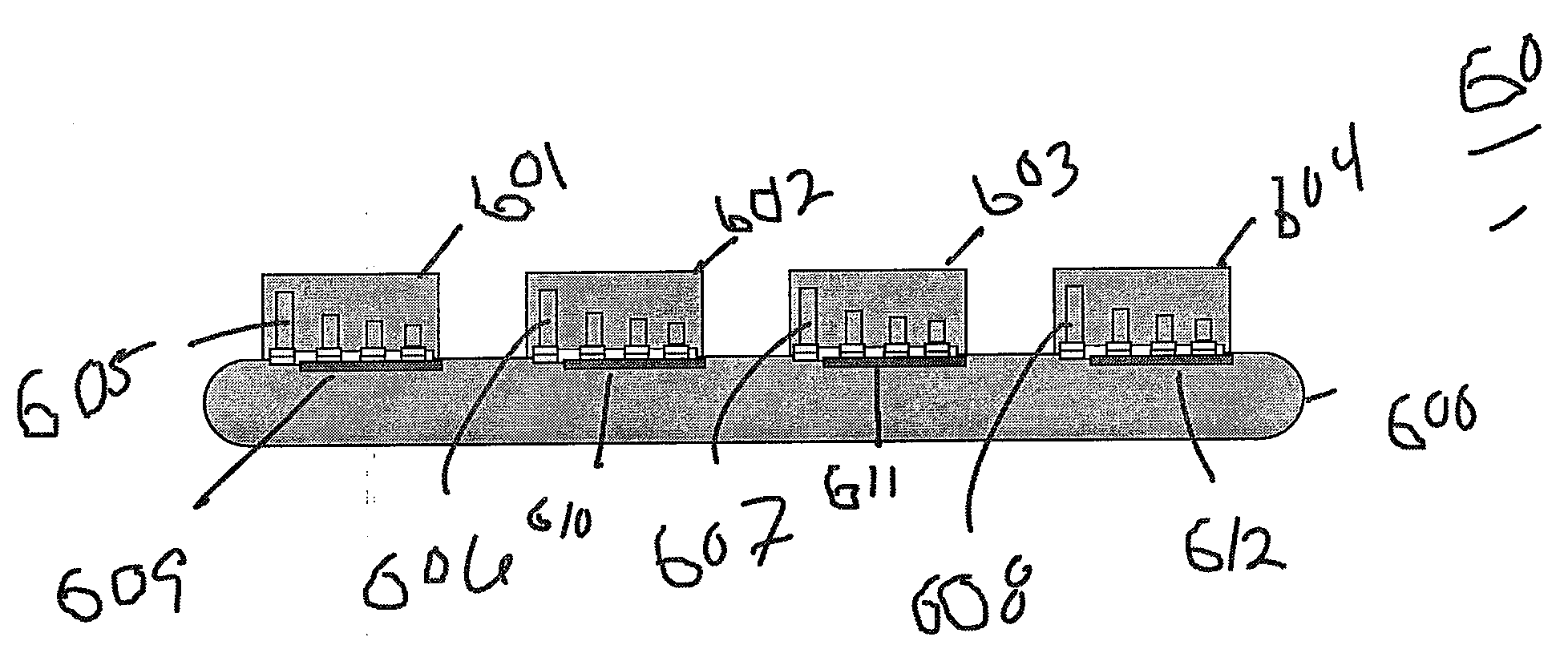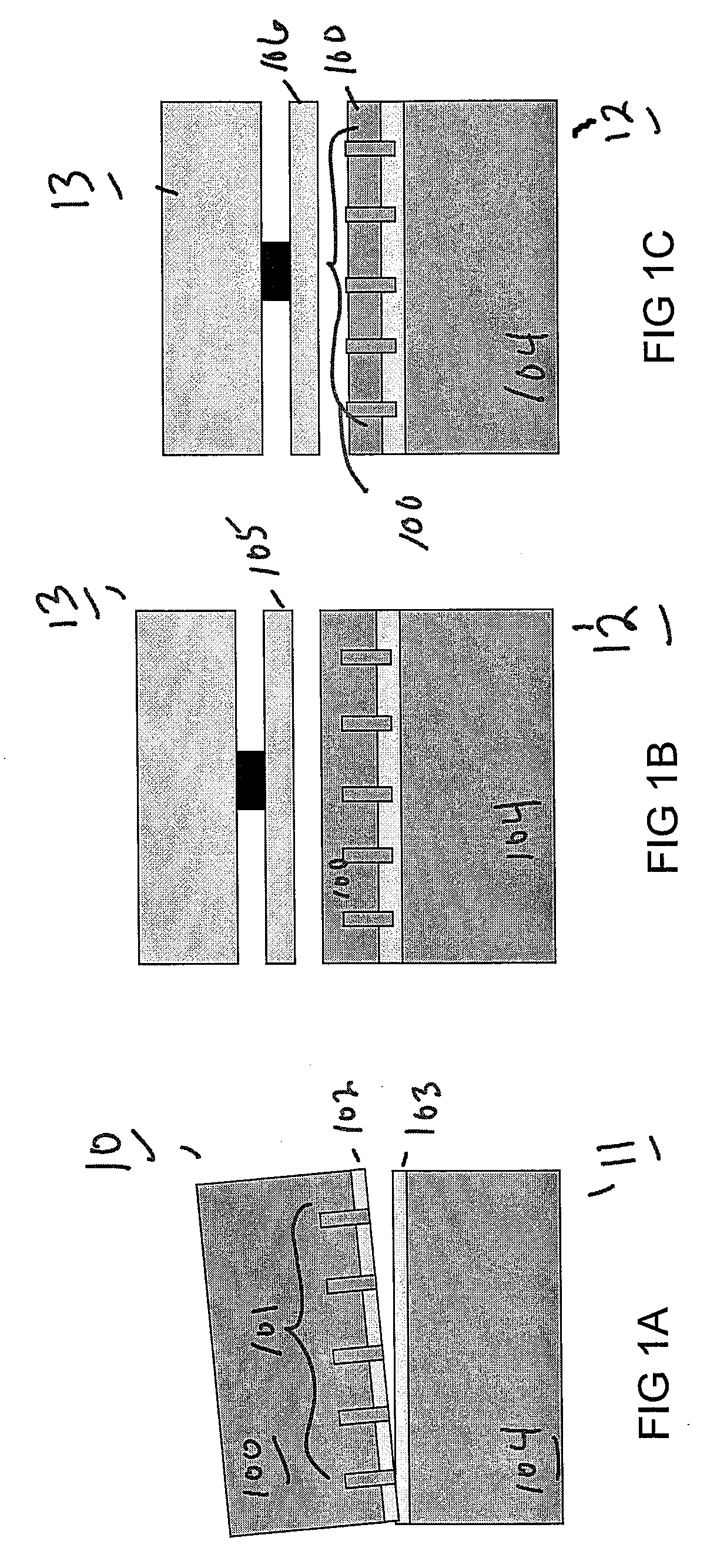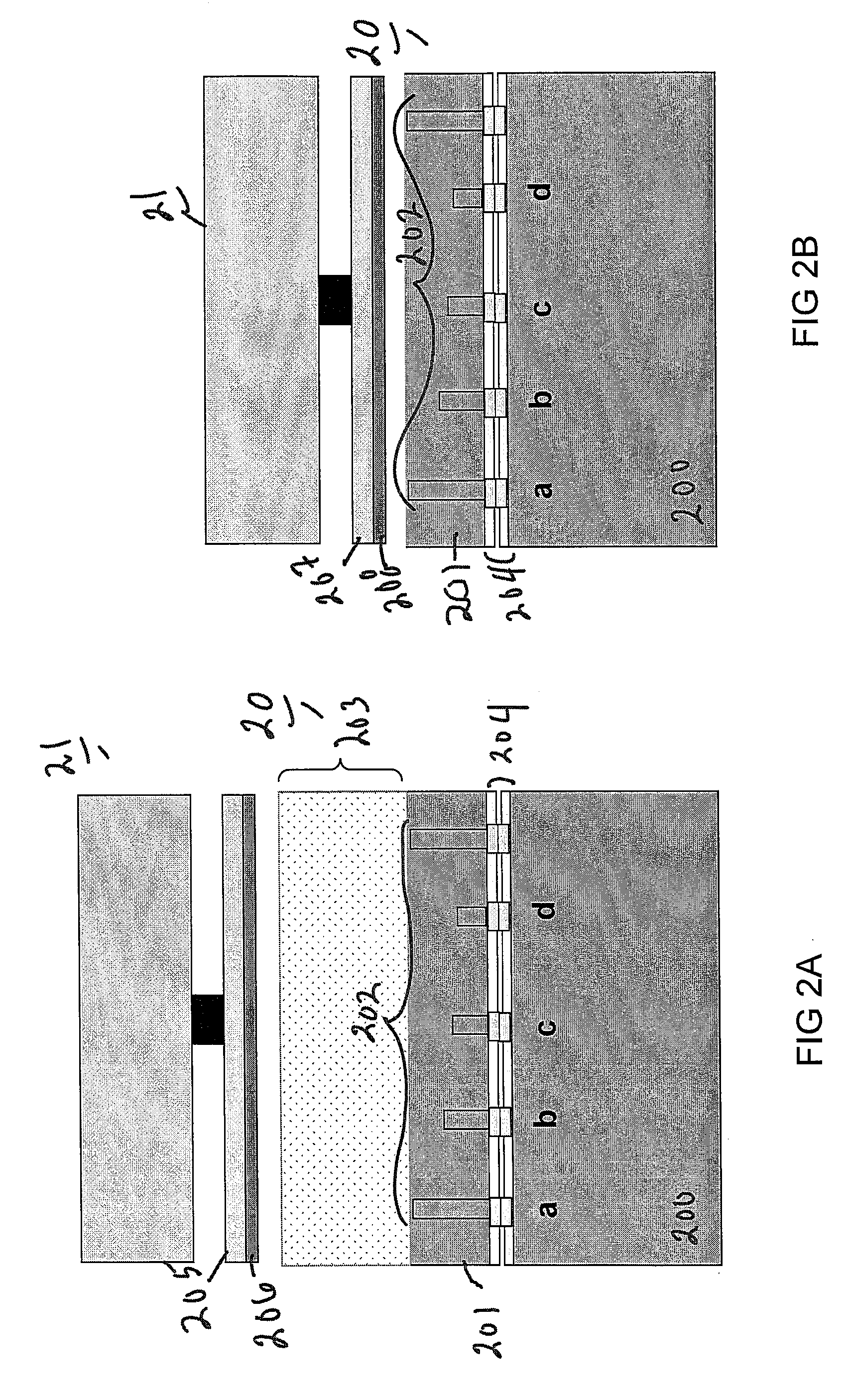Thickness Indicators for Wafer Thinning
- Summary
- Abstract
- Description
- Claims
- Application Information
AI Technical Summary
Benefits of technology
Problems solved by technology
Method used
Image
Examples
Embodiment Construction
[0035]The making and using of the presently preferred embodiments are discussed in detail below. It should be appreciated, however, that the present invention provides many applicable inventive concepts that can be embodied in a wide variety of specific contexts. The specific embodiments discussed are merely illustrative of specific ways to make and use the invention, and do not limit the scope of the invention.
[0036]The present invention will be described with respect to preferred embodiments in a specific context, namely a two-layer 3D IC semiconductor device with TSV formed as the thickness indicator. The invention may also be applied, however, to various other multilayer semiconductor devices, and the thickness indicators may be any type of device structure, such as trenches, TSV, alignment marks, combinations thereof, and the like.
[0037]With reference now to FIG. 2A, there is shown a cross-sectional view of stacked wafer 20 during a thinning process configured according to one ...
PUM
 Login to View More
Login to View More Abstract
Description
Claims
Application Information
 Login to View More
Login to View More - R&D
- Intellectual Property
- Life Sciences
- Materials
- Tech Scout
- Unparalleled Data Quality
- Higher Quality Content
- 60% Fewer Hallucinations
Browse by: Latest US Patents, China's latest patents, Technical Efficacy Thesaurus, Application Domain, Technology Topic, Popular Technical Reports.
© 2025 PatSnap. All rights reserved.Legal|Privacy policy|Modern Slavery Act Transparency Statement|Sitemap|About US| Contact US: help@patsnap.com



